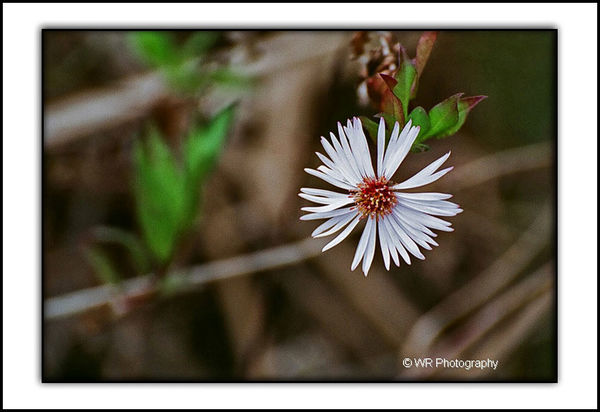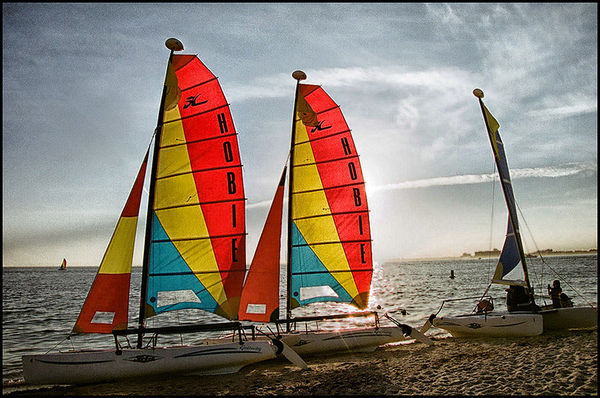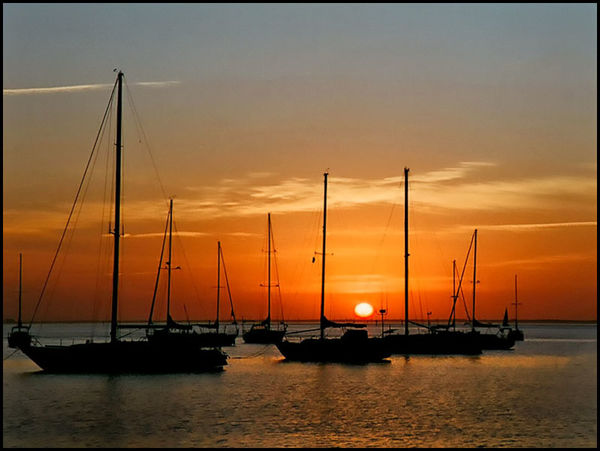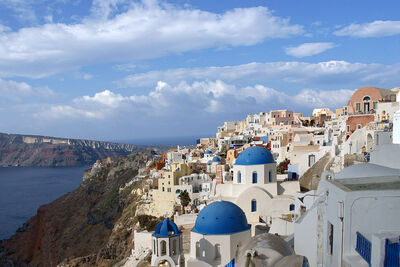Is using film obsolete?
Aug 3, 2016 10:05:31 #
Nobody is going to deny that digital is very convenient. No film to buy, no expensive development and printing can be easily done at home. It implies using a computer and software but we can do to digital what we could have never done to film when it comes to processing and all in daylight not the darkness of a darkroom.
Software is available to do practically everything we want to do including what used to be a nightmare, which is correcting perspective. Software for b&w editing is now better than ever. A simple SD or CF card can last forever and it is an almost one in a lifetime investment. Using several ISO speeds while shooting with the same card is just a simple camera setting. These are some of the advantages and conveniences of using digital.
It is said that a file has millions of colors if the original was shot as a JPEG in the sRGB color space which has 8 bits. A RAW image has 12 bits and records lots of colors and information although I always questioned what happens to all of those colors and information when the file is converted to a JPEG and the sRGB color space but that is for a discussion another day.
These images were shot using old Fujicolor 100 negative film developed and scanned at low resolution at Walgreen. Today it is getting more difficult to find a lab that will develop film in one hour as they used to do and many of them have stopped developing completely or ask the customer to wait a week or so because the film is sent elsewhere due to the low volume of business.
First thing that strikes the regular digital user when using a film like this is the tremendous dynamic range. I had the film scanned and still I had to tweak the files to get the results I wanted. Even when the exposures were right on for digital use they seemed as too much for film and I found myself adjusting for that. Colors are saturated, details well rendered and the dynamic range is more than evident as can be seen in the picture of the sailboats.
Fujicolor has a tendency toward red in the middle tonalities, less noticeable in highlights and shadows (as per my experience) but the adjustment of colors is easily done with Photoshop. Other films tend to cast a blue color to the shadow areas while others are too grainy by digital standards especially those made to be shot at ISO 400 or above.
Black and white film also has a large dynamic range like color negatives but with b&w film things are very different since it requires testing to determine the ISO speed at which the film will yield its best tonalities and the proper development time to extract the most details from the highlights and usually both are off from what the film maker recommends. With color film slight overexposure renders the best tonalities but I would recommend if using film to be scanned into digital files to shoot at the manufacturer recommended ISO.
I shot these three images in Key Biscayne here in Miami during an early winter. Some of the images of that roll needed for my taste slight desaturation of colors. Sharpness was there, no need to sharpen the files. As I said, such a large dynamic range required careful work in post. I am pleased with the results. I almost forgot to say that caring for the negatives is very important since they scratch easily and although today that can be easily fixed in the past it ruined the negative to the point of rendering it useless.
I used a Nikon F100 with my old 28-105 AF-D lens although for the flower I cannot remember if I used my macro lens or the "macro" feature of the 28-105. I like the tonalities I see with this film and I am sure I will use it again...if I can find film somewhere and a good lab to develop it within reasonable prices.
Software is available to do practically everything we want to do including what used to be a nightmare, which is correcting perspective. Software for b&w editing is now better than ever. A simple SD or CF card can last forever and it is an almost one in a lifetime investment. Using several ISO speeds while shooting with the same card is just a simple camera setting. These are some of the advantages and conveniences of using digital.
It is said that a file has millions of colors if the original was shot as a JPEG in the sRGB color space which has 8 bits. A RAW image has 12 bits and records lots of colors and information although I always questioned what happens to all of those colors and information when the file is converted to a JPEG and the sRGB color space but that is for a discussion another day.
These images were shot using old Fujicolor 100 negative film developed and scanned at low resolution at Walgreen. Today it is getting more difficult to find a lab that will develop film in one hour as they used to do and many of them have stopped developing completely or ask the customer to wait a week or so because the film is sent elsewhere due to the low volume of business.
First thing that strikes the regular digital user when using a film like this is the tremendous dynamic range. I had the film scanned and still I had to tweak the files to get the results I wanted. Even when the exposures were right on for digital use they seemed as too much for film and I found myself adjusting for that. Colors are saturated, details well rendered and the dynamic range is more than evident as can be seen in the picture of the sailboats.
Fujicolor has a tendency toward red in the middle tonalities, less noticeable in highlights and shadows (as per my experience) but the adjustment of colors is easily done with Photoshop. Other films tend to cast a blue color to the shadow areas while others are too grainy by digital standards especially those made to be shot at ISO 400 or above.
Black and white film also has a large dynamic range like color negatives but with b&w film things are very different since it requires testing to determine the ISO speed at which the film will yield its best tonalities and the proper development time to extract the most details from the highlights and usually both are off from what the film maker recommends. With color film slight overexposure renders the best tonalities but I would recommend if using film to be scanned into digital files to shoot at the manufacturer recommended ISO.
I shot these three images in Key Biscayne here in Miami during an early winter. Some of the images of that roll needed for my taste slight desaturation of colors. Sharpness was there, no need to sharpen the files. As I said, such a large dynamic range required careful work in post. I am pleased with the results. I almost forgot to say that caring for the negatives is very important since they scratch easily and although today that can be easily fixed in the past it ruined the negative to the point of rendering it useless.
I used a Nikon F100 with my old 28-105 AF-D lens although for the flower I cannot remember if I used my macro lens or the "macro" feature of the 28-105. I like the tonalities I see with this film and I am sure I will use it again...if I can find film somewhere and a good lab to develop it within reasonable prices.
Aug 3, 2016 10:08:31 #
Film is not dead. I just sold a Canon Rebel with 28-80 lens to a guy yesterday. He wants to try film again.
Aug 3, 2016 10:12:36 #
I agree, it is not dead but what seems to be dying is finding a lab that will do the development and scanning at reasonable prices.
Aug 3, 2016 10:18:50 #
Film is not dead but it is getting pretty expensive...took my old canon a-1 out and shot 24
$11.00 to process at walgreens...
$11.00 to process at walgreens...
Aug 3, 2016 10:24:02 #
I love the 28-105 AF D Nikkor. It is on my D7100 80% of the time . Ends up being a 42-152 with the crop sensor.
Aug 3, 2016 10:36:29 #
I can see using film if custom darkroom prints are to be made from it. I can't see shooting film just to scan it. To get results comparable to digital capture with a good DSLR you have to get expensive, high end scans, which just adds to the cost of the film and processing.
Aug 3, 2016 11:06:29 #
Hello hears a listing of labs in the U.S.A. a few may have gone but most still have their website page up see below.
http://istillshootfilm.org/post/24888047611/list-of-photographic-labs-in-the-us-as-of-2012
http://istillshootfilm.org/post/24888047611/list-of-photographic-labs-in-the-us-as-of-2012
camerapapi wrote:
Nobody is going to deny that digital is very conve... (show quote)
Aug 3, 2016 11:15:41 #
Richard thank you for sending the comprehensive list of labs that develop film. I noticed that it seems as if there is nobody doing that in Florida although I know Walgreens sends the rolls somewhere. The professional lab where I take my digital files for printing has stopped developing film.
Aug 3, 2016 11:25:14 #
Easy enough to develop your own. B&W is very straightforward and inexpensive. Color slides or negative film is a bit more complicated, but not difficult with the appropriate chemical kit and good temperature control (water bath).
Aug 3, 2016 11:27:19 #
brent46 wrote:
I love the 28-105 AF D Nikkor. It is on my D7100 80% of the time . Ends up being a 42-152 with the crop sensor.
I bought mine with a D100 in 2002 and it is a favorite. Although I have used it very often with my D7000 it is now used more often with my D610.
The "macro" feature is very practical in the field.
Aug 3, 2016 11:29:01 #
TriX wrote:
Easy enough to develop your own. B&W is very straightforward and inexpensive. Color slides or negative film is a bit more complicated, but not difficult with the appropriate chemical kit and good temperature control (water bath).
Yes, I agree but I do not shoot negative film every day and slide film is now a thing of the past, at least for me.
Aug 3, 2016 11:35:16 #
camerapapi wrote:
...if I can find film somewhere and a good lab to develop it within reasonable prices.
Try Pitman Photo Supply on South Dixie for your color negatives.
There is an excellent lab in Jacksonville and another in Gainesville that even handles B&W, transparency and large format film but you should be able to find more labs closer to home.
You can can get much better scans yourself than you will ever get from Walgreens, Costco, etc. A dedicated film scanner for 35mm film is not too expensive. What gets really expensive is medium format.
Aug 3, 2016 11:39:03 #
Brent, this is a shot with my D7000 and 28-105mm f3.5-4.5 AF-D lens in Canaan Valley West Virginia about three years ago during a fall visit. It was shot on a tripod at 28mm f8.
Aug 3, 2016 11:40:55 #
Aug 3, 2016 11:54:30 #
camerapapi wrote:
... Other films tend to cast a blue color to the shadow areas while others are too grainy by digital standards especially those made to be shot at ISO 400 or above. ...
Incidentally, a blue cast in the shadows is a natural consequence of having a film whose daylight balance is constant. If you capture a digital image with White Balance set to daylight rather than Auto you are likely to see something similar. It's just the consequence of having the shadows illuminated by skylight rather than sunlight.
Films definitely have some built in biases. Fuji seems to render greens differently from Kodak films. Ektar is more saturated than Portra, which is my favorite for landscapes. Of course, you can always add your own bias to the scanned image.
Most films below about ISO 125 are virtually grain-less unless you enlarge them too much or they are improperly developed.
If you want to reply, then register here. Registration is free and your account is created instantly, so you can post right away.











